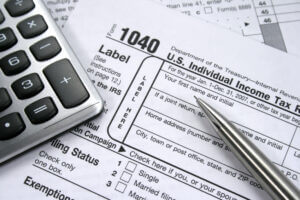By Dave Driscoll
“Walk away cash” is what’s in your pocket, free of debt and taxes, when you walk away from the closing table after selling your business – it’s the true measure of the transaction’s impact on your life.
Within your industry, you may hear stories like Julie sold her company for $3 million, or Joe sold his for a multiple of 7 times free cash flow. Those headline numbers make for great conversation and may reflect the price paid for companies, but the real value depends on the walk away cash.
In Julie’s hypothetical business sale for $3 million dollars, she had no business debt, and was taxed as an “S” corporation, meaning that the gains from the sale flowed through to her personal tax return.
In most transactions, the seller retains any business debt and then uses the sale proceeds to pay off that debt. In Julie’s case, she kept all of the cash proceeds without needing to pay a lender. In contrast, other sellers might be carrying debt – in some cases, a lot of debt. If a debt-carrying owner sold a business for the same $3 million, he or she would walk away from the closing table with $3 million minus the amount of debt. Same sale price, but a much different end result for the sellers.
Corporate structure is another significant factor in seller proceeds. An “S” corporation results in paying only one level of tax on the proceeds of the sale. However, if Julie had a “C” corporation, two levels of tax would have been required – first, tax on the proceeds at the “C” corporation level, and then more tax when the cash was distributed to Julie as the shareholder.
Consider Joe’s rumored sale for seven times free cash flow. A multiple of seven certainly sounds impressive, but his free cash flow is an unknown. Free cash flow is a reflection of how a company operates and how much cash is generated over and above what is needed to meet all the operational obligations of the business. Businesses operate at various levels of efficiency and profitability, so naturally, free cash flow is different for every business.
Perhaps Joe’s business was an underperformer within the industry; gross profit margin was low and general selling and administrative expenses were higher than industry norms. These factors combined to produce free cash flow in the bottom quartile of industry performance. In Joe’s case, 7 times free cash flow sounded very good, but the actual price (and walk away cash) received may have been quite low.
Another question worth considering in the sale of businesses: were the seller’s objectives met?
In Julie’s case, she sold for an appropriate value (as defined by her industry), kept all the cash from the sale due to her debt-free business, and paid the least amount of tax because of her corporate structure. She was probably pretty satisfied with her ability to fund her Life Beyond Business.™
What was Joe’s objective? Maybe Joe was thankful just to sell the company for enough money to pay off his lenders and have a few coins left over to take a vacation and decompress.
Don’t get wrapped up in attention-grabbing numbers that may not tell the whole story of the business sale. Success is really determined by what the seller takes away from the closing table, and success can be measured in many ways.
Understanding how debt and operational performance impact your walk away cash number is very important when determining whether selling your company will obtain your objectives.
Dave Driscoll is president of Metro Business Advisors, a business brokerage, valuation and exit

planning firm helping owners of companies with revenue up to $20 million sell their most valuable asset. Reach Dave at [email protected] or (314) 303-5600. www.MetroBusinessAdvisors.com




